Osteoporosis: Don’t Let it Sneak Up On You!

In this post we’ll be talking about osteoporosis, which is characterized by bone that has become porous and low density, leading to bone fractures. Osteoporosis is a particularly large problem for post menopausal women, commonly resulting in fractures of the hip, wrist and spine. You may have observed the characteristic “hump back” slumping spine associated with osteoporosis, often seen in older people. In this post we’ll delve into the etiology of osteoporosis and what can be done to prevent and potentially even reverse this condition.
Don’t let it sneak up on you
Osteoporosis can be a “silent killer” that strikes without warning, especially as we get older. It is not uncommon for people to discover they have osteoporosis when a minor impact like a bump or even simply sitting down too quickly results in a fracture. For this reason it is important for people to monitor their bone mineral density as they reach middle age, and especially into older age. Osteoporosis is characterized by low bone density, which makes bone brittle, weak and easily fractured.
We’ll get into bone mineral density testing in more detail later, but first let’s jump into how osteoporosis develops.
Bone remodeling
Bone in the body is constantly being remodeled, which is a process of bone breakdown (resorption) and formation (deposition). Low bone density and osteoporosis occur when the rate of bone resorption exceeds the rate of bone deposition. The early stages of low bone density are called osteopenia, which can later develop into osteoporosis. Whether your bones are still nice and dense, or you have osteopenia, or even osteoporosis, there is a lot you can protect your bones and prevent fractures, so keep reading!
Prevalence of osteoporosis
Osteoporosis causes almost 9 million fractures per year worldwide, many of which happen in western countries like the United States. Overall, women are disproportionately affected, and make up 61% of osteoporotic fractures (1). In women over age 45, osteoporotic fractures account for more time spent in the hospital than many other diseases, including diabetes, myocardial infarction and breast cancer (2). Although women are more commonly affected, the consequences are grim for men as well. Although women suffer fractures more often, men have higher rates of fracture-related mortality. In fact, in the six months following a fracture, the mortality rate was about double that of similarly aged women (3).
Causes of osteoporosis
Many factors can contribute to osteoporosis and it’s often not simply a matter of having enough calcium.
To Read About Blog Topic, Scroll Down
Want To Work With Our Clinic?
Do you have a chronic or mystery illness that no one has been able to help you with? Are you simply wanting to re-connect with a healthier version of yourself? It’s Time To Finally Feel Better!
Other contributing factors:
- Poor nutrient absorption
- Important bone minerals and fat-soluble nutrients must be absorbed to be utilized
- Vitamin D deficiency
- Necessary for the body to absorb and utilize calcium
- Vitamin K2 deficiency
- This vitamin found in fermented foods like sauerkraut directs serum calcium to be stored in bone
- Other important bone mineral deficiencies:
- Magnesium
- Boron
- Phosphorous
- Sedentary lifestyle
- Weight-bearing exercise in particular is important to promote bone deposition and adequate bone density
- Smoking
- Associated with an increased risk of fracture
- Certain medications
- Corticosteroids like prednisone and cortisone
- Hormone imbalance
- Estrogen deficiency in women
- Post menopausal changes in hormones
- Testosterone deficiency in men
- Parathyroid hormone
- Growth hormone
- Thyroid disease
As we can see, many factors contribute to osteoporosis. It’s important to determine what root cause is underlying low bone density and work from there. In addition, bone density drugs like Fosamax may actually contribute to fractures!
Fosamax
Several drugs like Fosamax (alendronate sodium) are in a category of drugs known as bisphosphonates which appear to increase bone density but may actually contribute to atypical fractures. One such study found that subtrochanteric insufficiency fractures were more common in post-menopausal women taking Fosamax and that the prolonged drug therapy may contribute to these fractures (4). Long-term Fosamax use for ten years or longer is associated with atypical femoral fractures in the shaft of the bone instead of the femoral neck.
Another larger retrospective review found similar increased prevalence of low-energy femoral shaft fractures associated with Fosamax use. They found that Fosamax use was a significant risk factor in the occurance of this type of fracture and that this fracture pattern was 98% specific to Fosamax users. The researchers suggest that this may result from diminished osteoclast activity and a resulting reduction in ability to repair stress fractures (5). Due to suppressed bone turnover, small cracks in the bone are unable to heal and lead to fractures over time as they become more numerous.
As we can see, the current conventional approach to managing bone density and osteoporosis leaves a lot to be desired. Now that we know some of the major players and understand a bit about how osteoporosis develops, let’s switch gears and get into solution mode. Next, we’ll look at natural treatments that can improve bone density, strengthen bone and assist with fracture healing.
Building healthy bones
It’s easy to tell from some of the causes of osteoporosis above some of the ways to prevent bone loss. Ensuring adequate intake and absorption of key nutrients like Vitamin D, Vitamin K2 and minerals like calcium, magnesium and boron is critical. In addition, regular weight-bearing exercise and maintaining hormone balance can be very important. We’ll cover resistance training but let’s first talk about hormone balance in more detail before getting into nutrition and other factors that play a role in osteoporosis.
Hormone balance
The demographics of osteoporosis reveal the importance of hormone balance in osteoporosis, which primarily affects older, post-menopausal women. This risk largely revolves around lower levels of estrogen, a hormone that impacts bone density. After menopause, estrogen levels fall and the rate of bone resorption (breakdown) overtakes the rate of bone formation, leading to bone loss.
Black cohosh
Black cohosh can help to support healthy estrogen levels, and it has a positive impact on BMD as a result. One trial of 62 postmenopausal women found that 40mg of black cohosh per day increased osteoblast activity and had a positive effect on bone remodeling (6). Another study evaluated the effect of black cohosh on rats and found that it has bone sparing properties. Researchers also suggest that black cohosh may prevent osteoporosis in older men, so it may be helpful for both sexes (7).
DHEA
Dehydroepiandrosterone (DHEA) is a precursor to both estrogen and androgen hormones. DHEA levels decline with age and reduced levels are believed to contribute to many age-related changes impacted by sex hormones, including bone density. One trial of 28 men and women in their early to mid 70s with low DHEA levels compared 50mg of DHEA per day to a placebo and found that bone mineral density (BMD) improved in the active group. In addition, fat mass decreased in the DHEA group and they also experience increased serum IGF-1 and testosterone levels (8).
A larger study of 225 healthy adults aged 55 to 85 years found similar results. In this trial, serum IGF-1, testosterone and estradiol all increased in women but not men, and lumbar BMD increased as well. Although there was no increase in BMD for men overall and no increase in hip, femoral neck or total body BMD for women, authors conclude DHEA confers a modest benefit to women. This cohort was made up of healthy (non-osteoporotic) adults, and it would be interesting to see if results might be more impressive in people with low BMD (9).
Next, let’s transition away from hormones and talk about the importance of healthy digestion and nutrient absorption before moving onto the critical nutrients for osteoporosis themselves.
Are you absorbing your nutrients?
One commonly overlooked contributing factor in osteoporosis is impaired digestion that prevents important bone nutrients from being absorbed and utilized to form health, dense bone. The best diet and supplementation will have little impact if the GI tract is not functioning properly. For this reason, it is important to make sure digestion is working properly early on.
As we’ve already begun to see, managing bone density is not as simple as merely consuming calcium, whether from dietary sources, supplements, or a combination of the two. Important bone minerals including calcium, boron, magnesium and phosphorous require strong stomach acid to be absorbed. Hypochlorhydria, or low stomach acid can contribute to low bone mineral density by preventing the absorption of these minerals. Hypochlorhyria, in turn, can result from many different causes.
Hypochlorhydria
One primary cause of low stomach acid, especially as it relates to osteoporosis, is age. Stomach acid production declines with age and results in impaired mineral absorption. Other causes include GI infections like H. pylori and parasitic infections. If stomach acid is low, it is important to correctly identify the upstream cause and work to treat that issue. Consider working with a functional medicine practitioner to be sure you correctly identify and treat your upstream cause, as osteoporosis can result from multiple causes.
SIBO connection
Small intestine bacterial overgrowth is well known to cause hypochlorhydria, and can be an underlying cause of osteoporosis (10). Because SIBO is fairly common and can contribute to so many problems in addition to osteoporosis, consider a SIBO breath test if symptoms warrant. Other common symptoms of SIBO primarily include digestive disturbances like gas, bloating, diarrhea and abdominal pain or cramping. Mood can also be affected, with symptoms of depression or anxiety being common.
Celiac disease
In addition to SIBO, other digestive disorders are commonly implicated as root causes of osteoporosis and low bone mineral density. Celiac disease is another well established root cause which impedes dietary mineral absorption. A systematic review of celiac patients found that adherence to a gluten free diet for five years resulted in normalized bone mineral density. One of the included studies found that a gluten free improved bone mineral density as well as bisphosphonate drugs (11).
Poor fat absorption
Another digestive-related cause of osteoporosis is poor fat absorption. You may have noticed in the earlier section both Vitamin D and Vitamin K2 are critical for bone health. Vitamin A, another fat soluble nutrient, is important as well. Because these are both fat-soluble nutrients, they rely on fat to absorb. And because we must eat fat with fat-soluble nutrients in order to absorb them, people on low-fat diets may become deficient even though they eat many foods rich in these nutrients. Poor fat digestion resulting from gall bladder removal or gallstones is another possible cause of deficiency.
Important nutrients
In this section we’ll discuss the most important nutrients to support increased bone density.
Calcium
Calcium is the most prevalent mineral in the body. Although some studies have shown no benefit to calcium supplementation, many have been poorly designed in light of what we now know about all the nutrients that are required to build bone. Many of these studies used only calcium carbonate, which is very poorly absorbed and has a strong alkalizing effect on stomach pH. In fact, calcium carbonate is the active ingredient of Tums, the popular over the counter heartburn medication, which temporarily relieves symptoms by alkalizing stomach acid.
Because of calcium carbonate’s alkalizing effect on stomach pH, it may actually do more harm that good because very acidic stomach acid is critical to absorbing nutrients. Some studies use calcium carbonate as a control, which may contribute to somewhat misleading data because carbonate may be contributing to worse outcome for the control group.
Another form of calcium that is much more effective is known as MCHA calcium, which stands for microcrystalline hydroxyapitate. The body uses this form to create bone matrix and some research shows supplementary MCHA calcium (also sometimes called MCHC) is an especially beneficial form. Many MCHC supplements are made from whole animal bones and supply a whole complex of necessary nutrients like collagen and trace minerals such as boron, potassium, zinc and copper that are used to construct the bone matrix. They also typically contain vitamins D and K2. These products are also sometimes referred to as “ossein-hydroxyapitate complex” supplements, or OHC in research.
MCHA Calcium
A number of clinical trials have evaluated the benefits of MCHA / OHC calcium by comparing its effects to those of calcium carbonate supplements in patients with osteopenia and osteoporosis, and found benefit. One such study followed a cohort of 54 women for three years and found statistically significant improvements in bone density and serum osteocalcin in the MCH calcium group (12).
A 2015 meta analysis of studies from 1966 to 2013 compared the benefits of OHC calcium supplements to calcium carbonate and concluded that the OHC form was superior to “calcium [carbonate] supplements in maintaining bone mass in postmenopausal women and in different conditions related to bone loss.” They also observed that in patients with osteopenia or osteoporosis who took OHC, pain symptoms were decreased and fractures healed more quickly (13).
In addition to other trace minerals important for bone health, MCH / OHC calcium also contain fat-soluble vitamins like vitamin D and K2, which are important as well. Without these other nutrients in addition to calcium, bone density may not be improved and calcium supplements alone can contribute to kidney stones.
Vitamin D
It’s well known that optimal vitamin D levels are critical for bone health. Dietary vitamin D increases calcium absorption and adequate blood levels are associated with significantly reduced risk of fracture (14). Of course, significantly elevated levels of vitamin D can also be problematic, so we like to keep blood levels between 35-60 ng/dL.
Vitamin K2
This important nutrient fulfills several job duties in the body related to bone density. It is a cofactor in the carboxylation of osteocalcin, which promotes normal bone mineralization and appears to regulate the growth of hydroxyapitate crystals. A number of animal studies demonstrate the vitamin K2 improves bone density in rats that are ovariectomized or treated with glucocorticoids like prednisone. It appears to stimulate bone formation and suppress bone resorption, or breakdown.
In human clinical trials, vitamin K2 has been demonstrated to support lumbar bone mineral density and prevent osteoporotic fractures with age-related osteoporosis and prevent vertebral fractures associated with glucocorticoid use. It also increases bone density of extremities in patients with cerebrovascular disease and maintains lumbar bone mineral density in liver-dysfunction induced osteoporotic patients (15).
One well-designed clinical trial on a cohort of 63 postmenopausal women in Indonesia found that adding 45mg of vitamin K2 to 1500mg of calcium carbonate per day significantly increased lumbar bone mineral density and decreased undercarboxylated osteocalcin levels over a 48 week treatment period (16).
Japanese research has corroborated these findings in a few studies which used 30-45mg of Vitamin K2 per day to increase bone density. One such trial from 2010 found that 45mg of Vitamin K2 daily prevented fractures and sustained lumbar bone mineral density in a cohort of 241 osteoporosis patients (17). A similar European study found similar benefit in a smaller sample size. Researchers suggest that Vitamin K2 therapy should be started early, starting at menopause to effectively prevent spine bone mineral density loss (18). Other research on Caucasian women has found similar benefit as well, confirming that Vitamin K2 is an effective way to prevent bone loss in multiple ethnicities of women (19).
Vitamin A
The last fat soluble nutrient we’ll talk about is Vitamin A, which at high doses is associated with increased risk of fracture. One review study found that high retinol (the active form of Vitamin A from animal sources) induces fractures in animals, and asserts that intake double the recommended amount can cause adverse effects in females. This is only true for retinol and not pro-vitamin A precursors like beta carotene.
One factor that we were not able to find more information on was the ratio of Vitamin A to the other fat-soluble vitamins. It is fairly well established at this point that the fat-soluble vitamin levels must remain in correct proportions to each other, and Vitamins A and D in particular protect against toxic levels of each other. It would be interesting to know what the nutrient status for Vitamin D was in these patients.
Other therapy options
In addition to these nutrients there are some other therapies that have shown benefit for maintaining and restoring bone mineral density, which we’ll cover in the following section.
Genistein and soy
Certain soy foods and other genistein-containing foods have also shown to be very helpful. Found in soy, fave beans, garbanzo beans and coffee, genistein is an phytoestrogenic isoflavone that shows promising benefits for bone mineral density and osteoporosis. In fact, genistein has the strongest estrogenic activity of any flavone, which makes it a great treatment option for menopausal osteoporosis.
Eating fermented soy in moderate quantities is a great way to get more genistein into the diet. Miso, tempeh and natto are all great sources of genistein. It is important, however to keep quality in mind, as more than 90% of soy grown at this point is genetically modified. When selecting soy products, there are two main labels to look for: organic and non-GMO. These labels ensure that the product is non-GMO.
A well-designed trial of 389 osteoporotic postmenopausal women found that 54mg of genistein aglycone combined with calcium and vitamin D3 increased bone mineral density compared to calcium and D3 alone over a 24 month period. One possible area of concern with phytoestrogens is possibly raising the risk of estrogen-based cancers like breast cancer. To address that concern, this study also measured markers for breast cancer including BRCA1 and BRCA2 expression and mammography and found that gene expression did not increase and mammographic density did not change significantly (20). These results suggest that genistein is safe and effective in postmenopausal women.
Other research has found supporting evidence in rats (21) and postmenopausal women (22)(23). It is unclear whether this research would extend to premenopausal women or men. Both of these human studies used a dose of 54mg of genistein per day.
Genistein supplements are also available, and there are a few non-GMO options, including:
- Source Natural Genistein
- Bluebonnet non-GMO Soy Isoflavones Plus Genistein
These are both isoflavone complexes that also contains daidzen and glycitein.
Another option that is more of a bone building complex, combining genistein with vitamin D3, vitamin K2, calcium, magnesium and zinc is:
- Designs for Health Osteoben
In addition to these nutrients, one constituent of cannabis has research also has some research behind it.
Cannabidiol
Cannabidiol (CBD) is a non-psychoactive constituent of marijuana. One study found that the administration of CBD enhanced the healing of femoral fractures in rats. This action was not seen in administration of THC alone, which is the main psychoactive component of marijuana. CBD increased production of an enzyme that catalyzes lysine hydroxylation, which in turn is involved in collagen crosslinking and stabilization. This effect led to CBD improing fracture healing (24).
Magnet therapy
One last treatment option with some research behind it is magnet therapy. One rat study found that long-term extremely low frequency magnetic field (ELFMF) was effective at increasing bone mineral content and bone mineral density. In addition, bone specific alkaline phosphatase levels were increased in the ELFMF group, leading researchers to conclude that ELFMF may offer benefits in the treatment of osteoporosis (25).
Resistance training
We mentioned the important of weight-bearing exercise earlier. Quite a bit of research confirms the importance of this type of exercise in preventing bone mineral density loss as we age. The importance of weight-bearing exercise cannot be overstated, and it’s a “better late than never” type of thing. No matter at what age one begins weight bearing exercise, it is a critical piece to slow and stop bone mineral loss, and can even help increase bone mineral density in some cases. By creating a mild positive stress, or eustress, on the bones, it triggers them to increase their strength and mineral composition.
A 1999 review study found that out of nearly two dozen trials evaluating the effects of resistance training found that the vast majority showed “a direct and positive relationship between the effects of resistance training and bone density,” and the few that did not show a benefit may have been poorly designed (26). A more recent study compared weight bearing exercise to non-weight bearing in a cohort of 40 osteoporosis patients in their 60s. Compared to the non-weight bearing exercise group, the weight-bearing group showed more impressive increases in bone mineral density as well as overall quality of life (27).
Despite concerns that using heavy weight for resistance training could lead to fracture, one Australian study found that heavy weights may actually confer a greater benefit than moderate weight. Participants completed either a high weight resistance training program or a low intensity program of the same duration and dose. The heavy weight group improved in height, bone mineral density and functional performance compared to the low intensity group (28). And best of all, there were no injuries! A patient’s initial bone mineral density should be considered to make sure the weights used are appropriate.
Although much of the research presented so far has focused primarily or exclusively on women, this trial evaluated the effects of resistance training on men, noting that although women are affected more by osteoporosis, 40% of osteoporotic fractures occur in men and that men have significantly greater risk of complications after a hip fracture. Coupled with the fact that men are treated far less often than women and more than 90% of osteoporosis in men goes undiagnosed and untreated, this represents a significant issue for men, especially older men (29).
This trial concluded that both resistance training and jump training, which revolves around jumping exercises increased bone mineral density in men with a mean of 44 years. Osteocalcin was also increased significantly. Resistance training appeared to be the most effective, resulting in more robust bone mineral density increases.
Based on this research and more that was not included here for brevity, resistance training and especially high intensity interval training (HIIT) is extremely important for anyone concerned about bone mineral density and must be included as part of any well-rounded treatment plan. Despite its placement towards the end of this article, it is a critical piece of the osteoporosis puzzle!
In conclusion
Osteoporosis is a significant health problem today, and the bisphosonate drugs commonly used to treat low bone mineral density have significant risks, including not reducing the risk of fracture, or in some cases even increasing that risk! Fortunately, there are many natural treatment options for osteoporosis that are safe and effective. By working with a functional medicine practitioner to correctly identify and treat your root cause, you can prevent or even reverse osteoporosis from developing and leading to a debilitating fracture.
General recommendations for Osteoperosis concern:
- Weight lifting / resistance training 2-3 days per week, plus short (10-30 mins) High Intensity Interval Training (HIIT) sessions 4-5 days per week.
- Achieve Vitamin D levels in the blood of 35-60 ng/ml. If supplementing with Vitamin D, be sure to also supplement with Vitamin K2 (see below for specifics).
- Ensure that you are getting adequate calcium from food (preferred) or if supplementing, use the MCHA form. It is best to get between 800-1300mg of calcium each day, optimally from foods.
- Vitamin K2 at 15-45mg per day (note that this is mg dosing and many MK-7 Vitamin K2 supplements are in mcg. Usually the MK-4 form will be required to get the 15-45mg per day dosing in a cost-effective way).
- For post-menopausal women, consider 40mg per day of black cohosh and/or 54mg daily of genistein aglycone (can also consider organic miso, tempeh, and natto consumption if soy is tolerated).
- If additional support is needed or desired, CBD and/or magnet therapy may be helpful (though there is not enough research to be conclusive on either of these. However, because they are generally safe and well-tolerated, it can be worth pursuing. Please note that magnet therapy is not to be used for anyone with a pacemaker).
- We do not recommend supplementing with DHEA (a hormone) outside of working with a functional medicine doctor who understands this hormone and is measuring blood levels.
Book My Free Phone Health Evaluation Functional Medicine Certification for Clinicians
References
- Johnell O and Kanis JA (2006) An estimate of the worldwide prevalence and disability associated with osteoporotic fractures. Osteoporos Int 17:1726.
- Kanis JA, Delmas P, Burckhardt P, et al. (1997) Guidelines for diagnosis and management of osteoporosis. The European Foundation for Osteoporosis and Bone Disease. Osteoporos Int 7:390.
- Kanis JA, Oden A, Johnell O, et al. (2003) The components of excess mortality after hip fracture. Bone 32:468.
- Kwek, Ernest Beng Kee, et al. “An Emerging Pattern of Subtrochanteric Stress Fractures: A Long-Term Complication of Alendronate Therapy?” Injury, vol. 39, no. 2, 2008, pp. 224–231., doi:10.1016/j.injury.2007.08.036.
- Neviaser, Andrew S, et al. “Low-Energy Femoral Shaft Fractures Associated With Alendronate Use.” Journal of Orthopaedic Trauma, vol. 22, no. 5, 2008, pp. 346–350., doi:10.1097/bot.0b013e318172841c.
- Wuttke, Wolfgang, et al. “Effects of Black Cohosh (Cimicifuga Racemosa) on Bone Turnover, Vaginal Mucosa, and Various Blood Parameters in Postmenopausal Women.” Menopause, vol. 13, no. 2, 2006, pp. 185–196., doi:10.1097/01.gme.0000174470.44822.57.
- Seidlová-Wuttke, D., et al. “Effects of Estradiol-17β, Testosterone and a Black Cohosh Preparation on Bone and Prostate in Orchidectomized Rats.” Maturitas, vol. 51, no. 2, 2005, pp. 177–186., doi:10.1016/j.maturitas.2004.07.007.
- Villareal, Dennis T., et al. “Effects of DHEA Replacement on Bone Mineral Density and Body Composition in Elderly Women and Men.” Obstetric and Gynecologic Survey, vol. 56, no. 4, 2001, pp. 221–222., doi:10.1097/00006254-200104000-00021.
- Mühlen, D. Von, et al. “Effect of Dehydroepiandrosterone Supplementation on Bone Mineral Density, Bone Markers, and Body Composition in Older Adults: the DAWN Trial.” Osteoporosis International, vol. 19, no. 5, 2007, pp. 699–707., doi:10.1007/s00198-007-0520-z.
- Dukowicz AC, Lacy BE, Levine GM. Small Intestinal Bacterial Overgrowth: A Comprehensive Review. Gastroenterology & Hepatology. 2007;3(2):112-122.
- Grace-Farfaglia P. Bones of Contention: Bone Mineral Density Recovery in Celiac Disease—A Systematic Review. Nutrients. 2015;7(5):3347-3369. doi:10.3390/nu7053347.
- Ciria-Recasens, Manel, et al. “Comparison of the Effects of Ossein-Hydroxyapatite Complex and Calcium Carbonate on Bone Metabolism in Women with Senile Osteoporosis.” Clinical Drug Investigation, 2011, p. 1., doi:10.2165/11592930-000000000-00000.
- Castelo-Branco, C., and J. Dávila Guardia. “Use of Ossein–Hydroxyapatite Complex in the Prevention of Bone Loss: a Review.” Climacteric, vol. 18, no. 1, 2014, pp. 29–37., doi:10.3109/13697137.2014.929107.
- Lips, Paul, and Natasja M. Van Schoor. “The Effect of Vitamin D on Bone and Osteoporosis.” Best Practice & Research Clinical Endocrinology & Metabolism, vol. 25, no. 4, 2011, pp. 585–591., doi:10.1016/j.beem.2011.05.002.
- Iwamoto, Jun, et al. “Effects of Vitamin K2 on Osteoporosis.” Current Pharmaceutical Design, vol. 10, no. 21, 2004, pp. 2557–2576., doi:10.2174/1381612043383782.
- Purwosunu, Yuditiya, et al. “Vitamin K2 Treatment for Postmenopausal Osteoporosis in Indonesia.” Journal of Obstetrics and Gynaecology Research, vol. 32, no. 2, 2006, pp. 230–234., doi:10.1111/j.1447-0756.2006.00386.x.
- Shiraki, Masataka, et al. “Vitamin K2 (Menatetrenone) Effectively Prevents Fractures and Sustains Lumbar Bone Mineral Density in Osteoporosis.” Journal of Bone and Mineral Research, vol. 15, no. 3, 2010, pp. 515–521., doi:10.1359/jbmr.2000.15.3.515.
- Iwamoto, Ichiro, et al. “A Longitudinal Study of the Effect of Vitamin K2 on Bone Mineral Density in Postmenopausal Women a Comparative Study with Vitamin D3 and Estrogen–Progestin Therapy.” Maturitas, vol. 31, no. 2, 1999, pp. 161–164., doi:10.1016/s0378-5122(98)00114-5.
- Knapen MHJ, Schurgers LJ, Vermeer C. Vitamin K2 supplementation improves hip bone geometry and bone strength indices in postmenopausal women. Osteoporosis International. 2007;18(7):963-972. doi:10.1007/s00198-007-0337-9.
- Marini, Herbert, et al. “Breast Safety and Efficacy of Genistein Aglycone for Postmenopausal Bone Loss: A Follow-Up Study.” The Journal of Clinical Endocrinology & Metabolism, vol. 93, no. 12, 2008, pp. 4787–4796., doi:10.1210/jc.2008-1087.
- Bitto, A, et al. “Effects of Genistein Aglycone in Osteoporotic, Ovariectomized Rats: a Comparison with Alendronate, Raloxifene and Oestradiol.” British Journal of Pharmacology, vol. 155, no. 6, 2008, pp. 896–905., doi:10.1038/bjp.2008.305.
- Marini, Herbert, et al. “Effects of the Phytoestrogen Genistein on Bone Metabolism in Osteopenic Postmenopausal Women.” Annals of Internal Medicine, vol. 146, no. 12, 2007, p. 839., doi:10.7326/0003-4819-146-12-200706190-00005.
- Morabito, Nunziata, et al. “Effects of Genistein and Hormone-Replacement Therapy on Bone Loss in Early Postmenopausal Women: A Randomized Double-Blind Placebo-Controlled Study.” Journal of Bone and Mineral Research, vol. 17, no. 10, 2002, pp. 1904–1912., doi:10.1359/jbmr.2002.17.10.1904.
- Kogan, Natalya M, et al. “Cannabidiol, a Major Non-Psychotropic Cannabis Constituent Enhances Fracture Healing and Stimulates Lysyl Hydroxylase Activity in Osteoblasts.” Journal of Bone and Mineral Research, vol. 30, no. 10, 2015, pp. 1905–1913., doi:10.1002/jbmr.2513.
- Akpolat, Veysi, et al. “Treatment of Osteoporosis by Long-Term Magnetic Field with Extremely Low Frequency in Rats.” Gynecological Endocrinology, vol. 25, no. 8, 2009, pp. 524–529., doi:10.1080/09513590902972075.
- Layne, Jennifer E., and Miriam E. Nelson. “The Effects of Progressive Resistance Training on Bone Density: a Review.” Medicine & Science in Sports & Exercise, vol. 31, no. 1, 1999, pp. 25–30., doi:10.1097/00005768-199901000-00006.
- Shanb AA, Youssef EF. The impact of adding weight-bearing exercise versus nonweight bearing programs to the medical treatment of elderly patients with osteoporosis. Journal of Family & Community Medicine. 2014;21(3):176-181. doi:10.4103/2230-8229.142972.
- Watson, S. L., et al. “Heavy Resistance Training Is Safe and Improves Bone, Function, and Stature in Postmenopausal Women with Low to Very Low Bone Mass: Novel Early Findings from the LIFTMOR Trial.” Osteoporosis International, vol. 26, no. 12, 2015, pp. 2889–2894., doi:10.1007/s00198-015-3263-2.
- Hinton PS, Nigh P, Thyfault J. Effectiveness of resistance training or jumping-exercise to increase bone mineral density in men with low bone mass: a 12-month randomized, clinical trial. Bone. 2015;79:203-212. doi:10.1016/j.bone.2015.06.008.
Are You Suffering From A Chronic Illness?
Does your current health situation look like this…
- Do you feel that you have tried many things and either nothing works, or the treatment does not hold?
- Have you been told that there is nothing that can be done to reverse your illness and you just need to manage symptoms?
- Does your illness impact your work, your family, your happiness and your social life?
We specialize in finding answers and solutions for complicated chronic illness when people feel like they have tried everything. If this sounds like you, book a free call with us to see if we are the right fit for your health goals.
Dr. Miles has spoken for the following organizations:

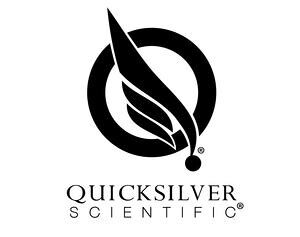








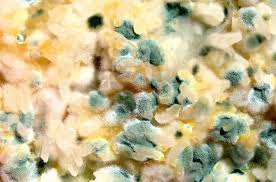

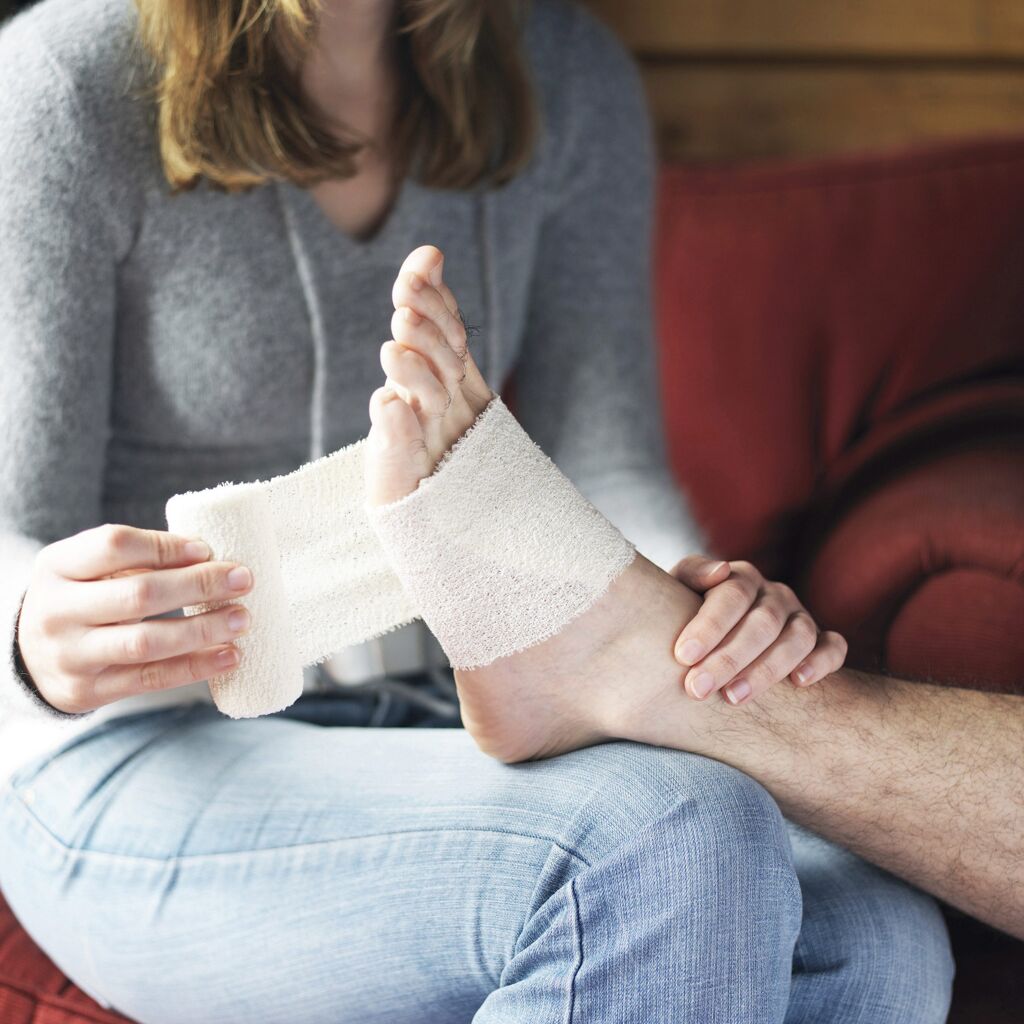
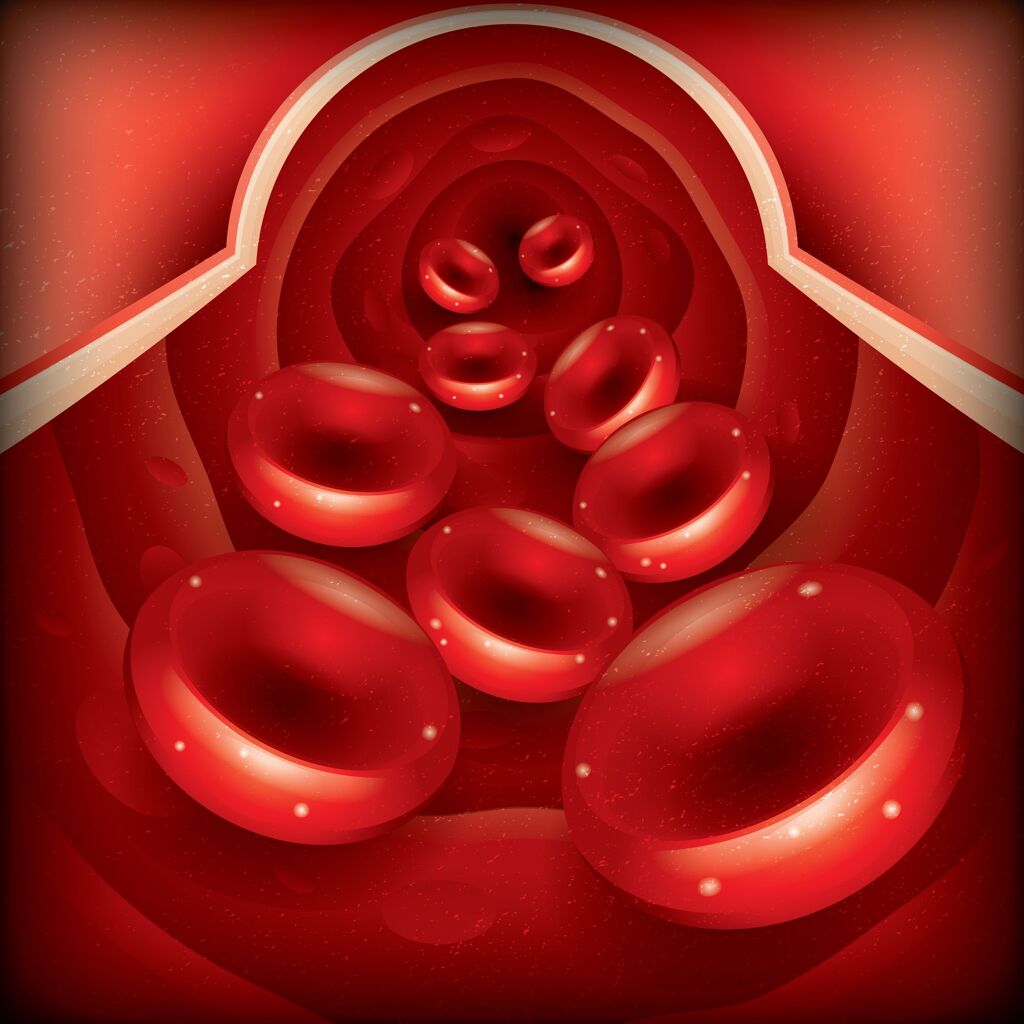
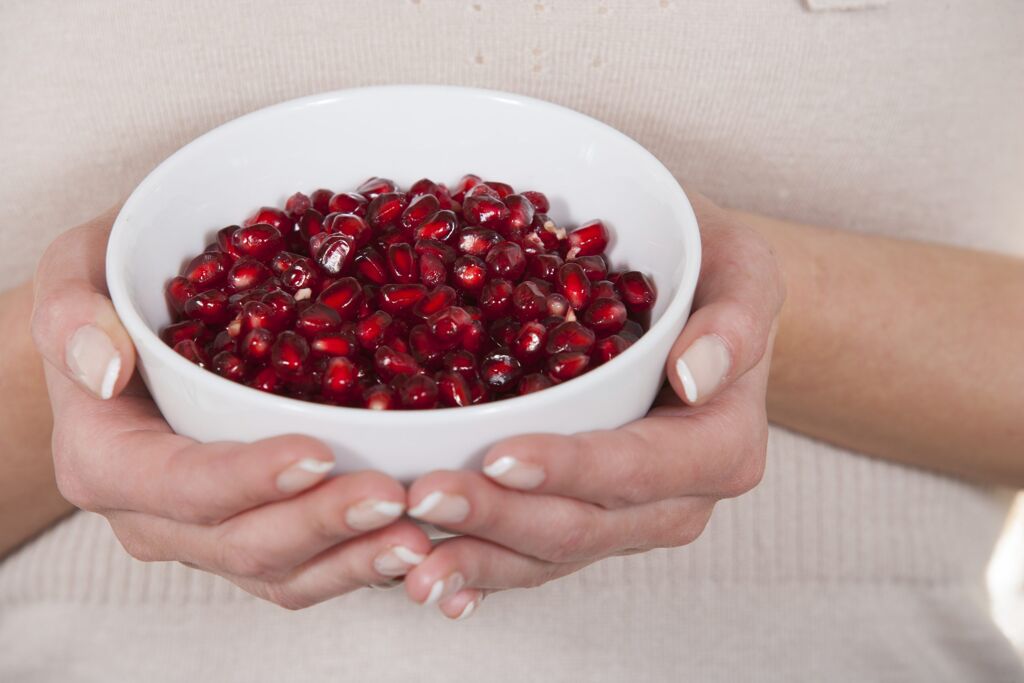

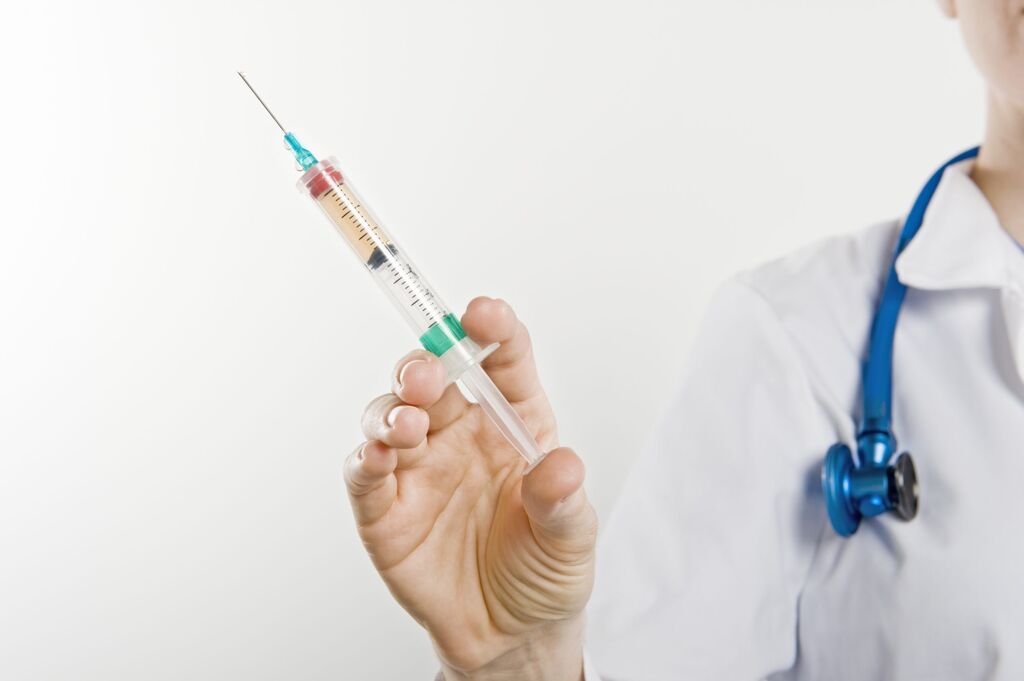

Responses